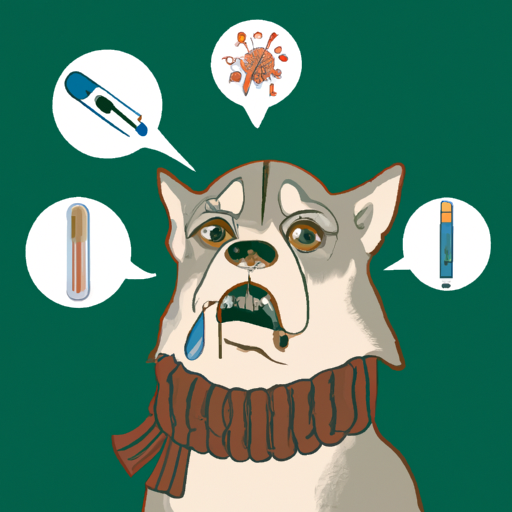1. Understanding Canine Distemper: A Comprehensive Overview
Distemper affects dogs in a myriad of ways, affecting their respiratory, gastrointestinal, and central nervous systems. As a caregiver, you would know that a healthy dog is a happy dog. Hence, knowing about diseases and how to prevent them is as important as knowing about their dietary requirements.
2. The Early Signs of Canine Distemper: Noticing the Unnoticed
In the initial stages, you might notice your dog displaying mild signs such as:
- High fever
- Reddened eyes
- Nasal discharge
You may also notice your dog becoming lethargic and losing their appetite. Such symptoms, while seemingly minor, should not be ignored.
3. The Progression of Canine Distemper: The Escalating Danger
As the disease progresses, the symptoms become more severe and noticeable:
-
Respiratory system: The virus first attacks the respiratory system, resulting in coughing, sneezing, and difficulty in breathing.
-
Gastrointestinal system: Next, it affects the digestive system, leading to vomiting, diarrhea, and dehydration.
-
Central Nervous System: In its final and most dangerous stage, the virus attacks the nervous system, causing seizures, paralysis, and even death.
The table below summarizes the stages and symptoms of distemper:
| Disease Stage | Symptoms |
|---|---|
| Early | High fever, Reddened eyes, Nasal discharge |
| Progressing | Coughing, Sneezing, Difficulty in breathing |
| Advanced | Vomiting, Diarrhea, Dehydration, Seizures, Paralysis |
4. Prevention and Treatment of Canine Distemper: The Lifesaving Measures
Unfortunately, there is no cure for canine distemper. However, prevention is possible with vaccines. Treatment focuses on alleviating symptoms and preventing secondary infections.
- Vaccines: The Distemper-Parvo vaccine, given to puppies at 6-8 weeks of age, is highly effective in preventing this disease.
- Supportive Care: If your dog contracts the disease, immediate veterinary care is necessary. Your vet will provide supportive treatments to manage symptoms.
5. The Long-Term Impact of Canine Distemper: A Lifelong Battle
Dogs that survive distemper often have lifelong health problems such as:
- Hard pad disease
- Enamel hypoplasia
- Seizures
- Progressive retinal atrophy
In the aftermath of distemper, a compassionate caregiver like you must be prepared to handle these long-term impacts.
Frequently Asked Questions
Q1: How does canine distemper spread?
A: The disease spreads through airborne exposure or through contact with an infected animal’s bodily fluids.
Q2: Can humans get canine distemper?
A: No, distemper cannot be transmitted to humans.
Q3: Is distemper always fatal?
A: While distemper can be fatal, some dogs do survive with prompt and adequate medical care.
Q4: Can my vaccinated dog get distemper?
A: Vaccination significantly reduces the chance, but it does not completely eliminate the risk.
Remember, as a caregiver, your knowledge and vigilance can make a difference to your dog’s health. Stay informed and stay safe.



